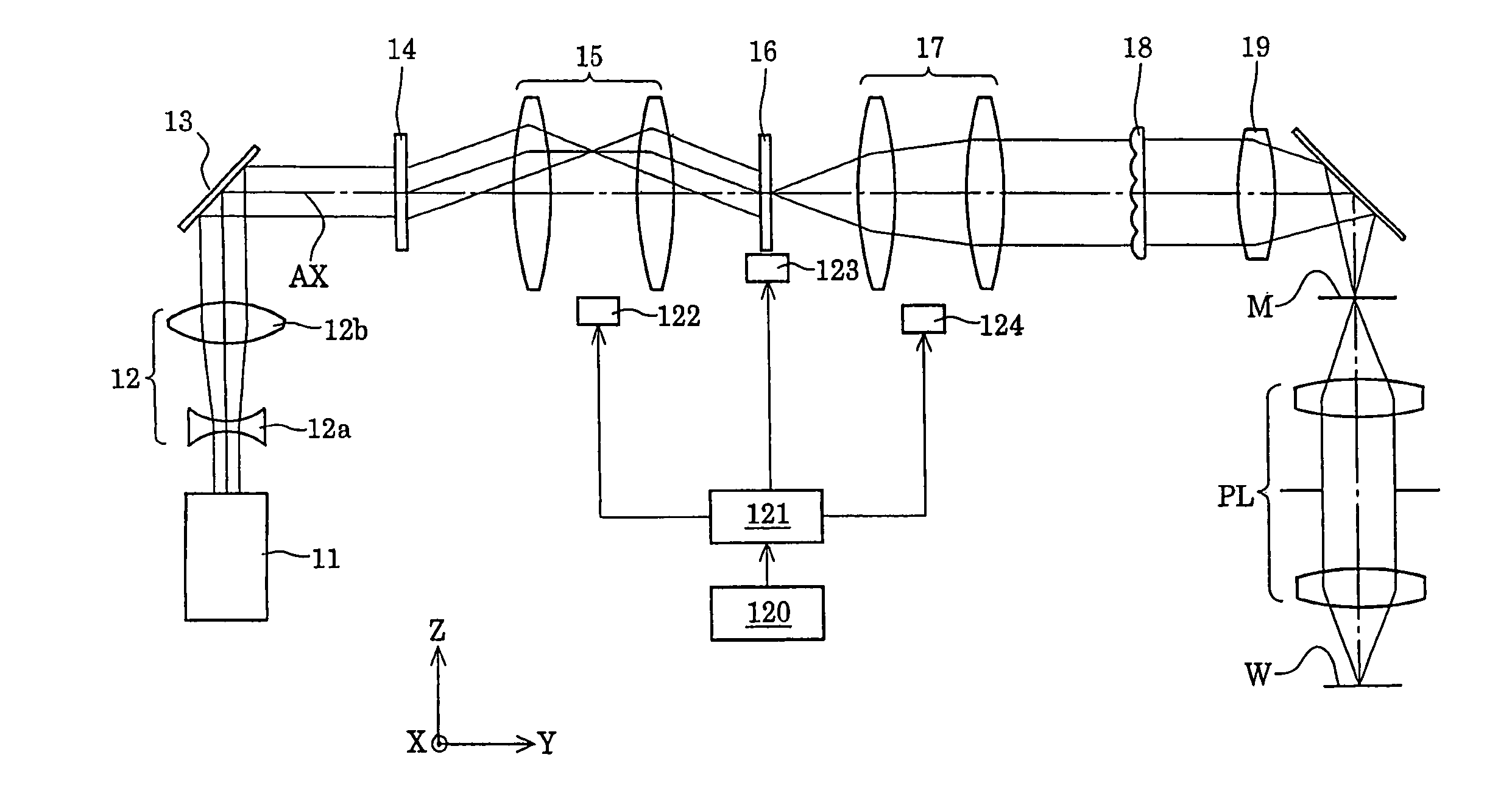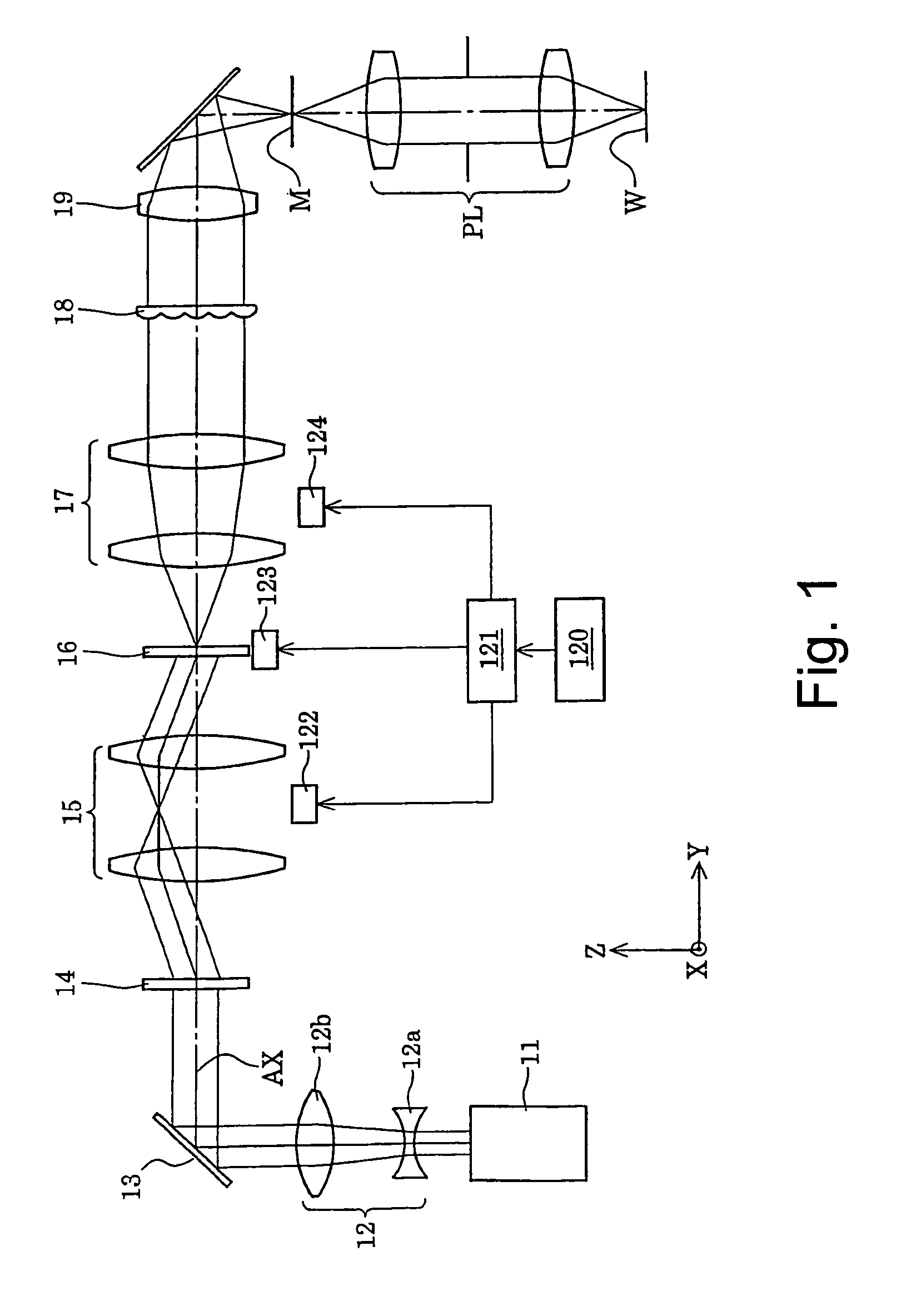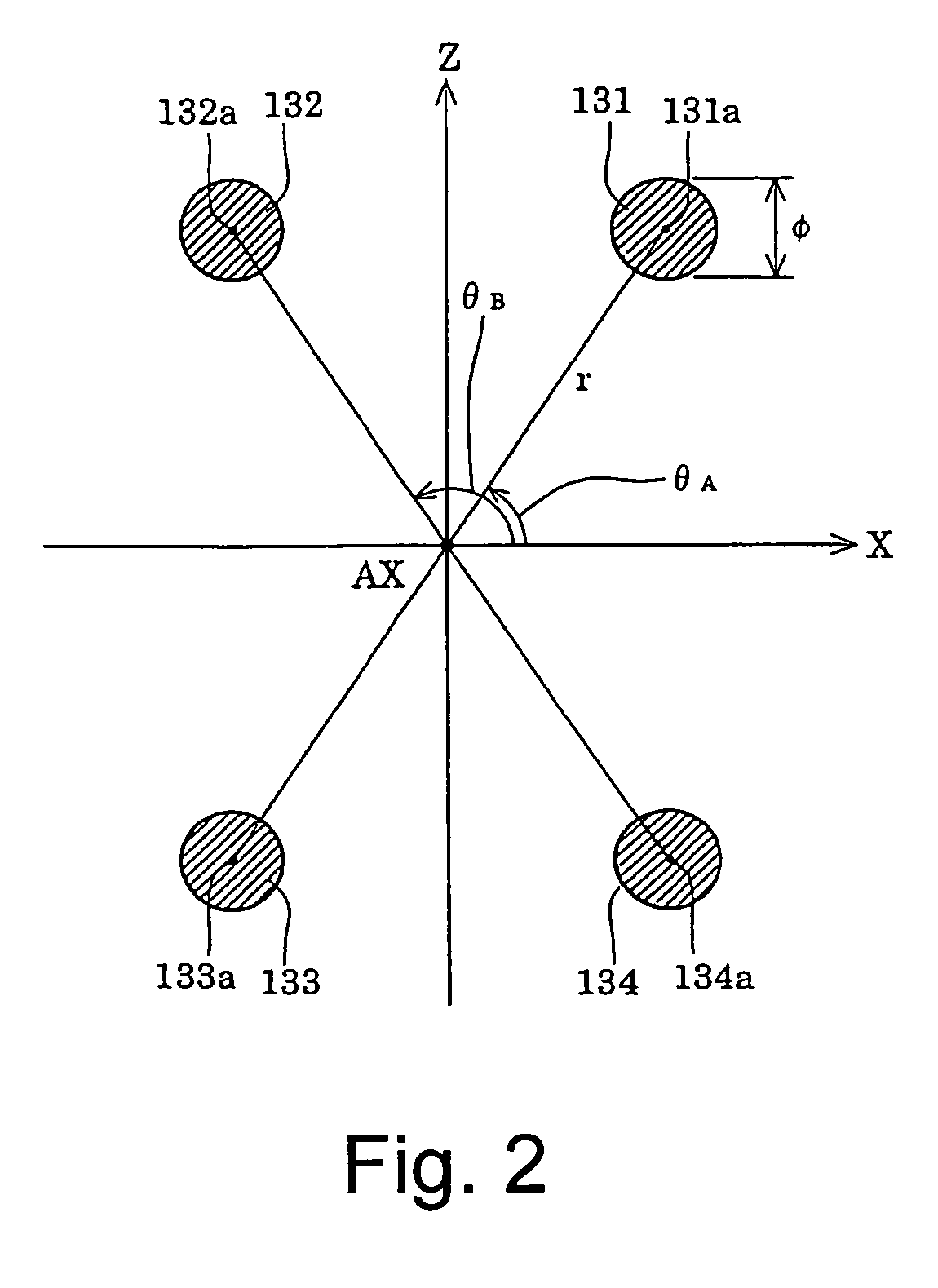Diffractive optical device, refractive optical device, illumination optical system, exposure apparatus and exposure method
a technology of refractive optical devices and diffractive optical components, which is applied in the direction of microlithography exposure apparatus, printers, instruments, etc., can solve the problems of unable to contribute to illumination, and reducing the illumination intensity of masks and wafers. , to achieve the effect of reducing the number of light transmissive members, and reducing the number of light transmis
- Summary
- Abstract
- Description
- Claims
- Application Information
AI Technical Summary
Benefits of technology
Problems solved by technology
Method used
Image
Examples
first embodiment
[0099]FIG. 1 is a diagram schematically showing a structure of an exposure apparatus equipped with an illumination optical system according to a first exemplary embodiment of this invention. In FIG. 1, Z, Y and X axes are set respectively in the normal direction (Z axis) of a wafer, which is a photosensitive-material coated substrate, a direction parallel with the plane of the paper of FIG. 1 (Y axis) and within the wafer plane, and a direction perpendicular to the plane of paper of FIG. 1 (X axis) and within the wafer plane.
[0100]The exposure apparatus of FIG. 1 has an ArF excimer laser light source that supplies light having a wavelength of 193 nm, and functions as a light source 11 for supplying exposure light (illumination light). As the light source 11, a KrF excimer laser light source that supplies light having a wavelength of 248 nm, an F2 laser light source that supplies light having a wavelength of 157 nm, a mercury lamp that supplies g-ray (436 nm) or i-ray (365 nm) may al...
second embodiment
[0139]FIG. 7 is a diagram schematically showing a structure of an exposure apparatus equipped with an illumination optical system according to a second exemplary embodiment of this invention. Referring to FIG. 7, the exposure apparatus of the second embodiment includes a light source 21 for supplying exposure light (illumination light). The light source 21 is structured from an ArF excimer laser light source that supplies light having a wavelength of 193 nm, for example, and a beam expander for adjusting the parallel beam emitted from the light source into a light beam having a predetermined rectangular cross-section.
[0140]In addition, a KrF excimer laser light source that supplies light having a wavelength of 248 nm or an F2 laser light source that supplies light having a wavelength of 157 nm may be used as the light source. Moreover, a mercury lamp or a light source that supplies g-rays (436 nm) or i-rays (365 nm) may be used as the light source. When using the mercury lamp, the l...
third embodiment
[0186]FIG. 17 is a diagram schematically showing a structure of an exposure apparatus provided with an illumination optical system according to a third embodiment of this invention. According to the third embodiment, the diffractive optical device of the first embodiment is applied to the diffractive optical device of the illumination field formation portion 23 of the illumination optical system of the second embodiment. The following explains the third embodiment, focusing on its differences from the first embodiment.
[0187]In FIG. 17, on an optical path between a mirror 33 and a diffractive optical device 36, a micro lens array group (or a fly's eye lens group) 340 is arranged, and is constituted by a first microlens array (or a first fly's eye lens: first optical element array) 340a formed by a microlens with positive refractive power, and a second microlens array (or a second fly's eye lens: second optical element array) 340b formed by a microlens with positive refractive power. ...
PUM
| Property | Measurement | Unit |
|---|---|---|
| wavelength | aaaaa | aaaaa |
| wavelength | aaaaa | aaaaa |
| wavelength | aaaaa | aaaaa |
Abstract
Description
Claims
Application Information
 Login to View More
Login to View More - R&D
- Intellectual Property
- Life Sciences
- Materials
- Tech Scout
- Unparalleled Data Quality
- Higher Quality Content
- 60% Fewer Hallucinations
Browse by: Latest US Patents, China's latest patents, Technical Efficacy Thesaurus, Application Domain, Technology Topic, Popular Technical Reports.
© 2025 PatSnap. All rights reserved.Legal|Privacy policy|Modern Slavery Act Transparency Statement|Sitemap|About US| Contact US: help@patsnap.com



